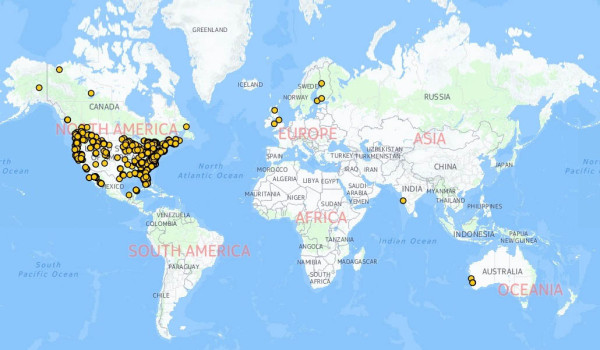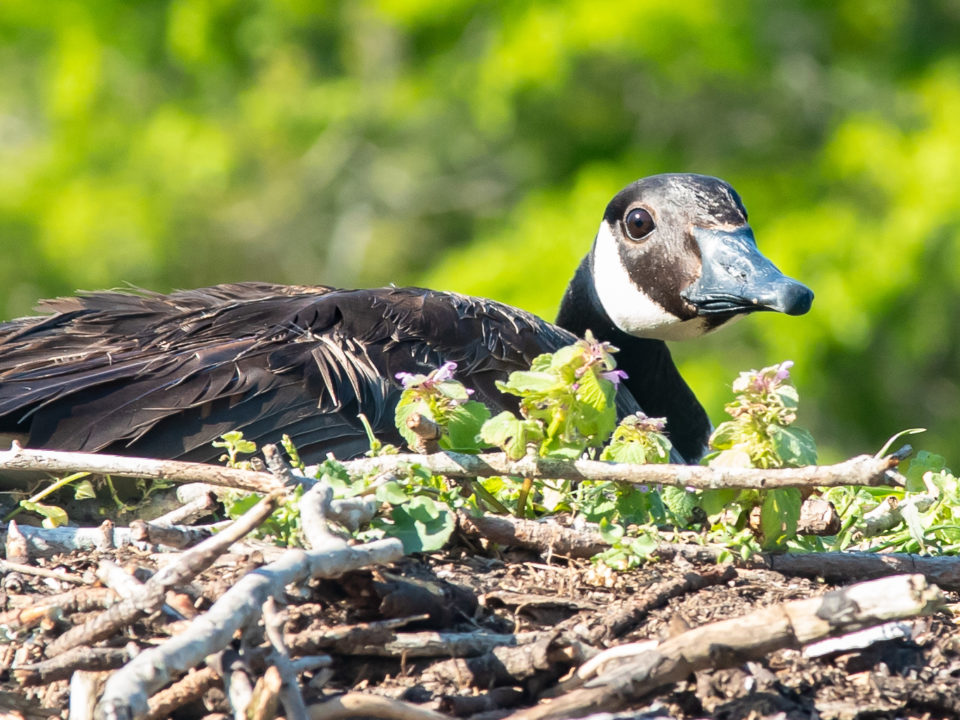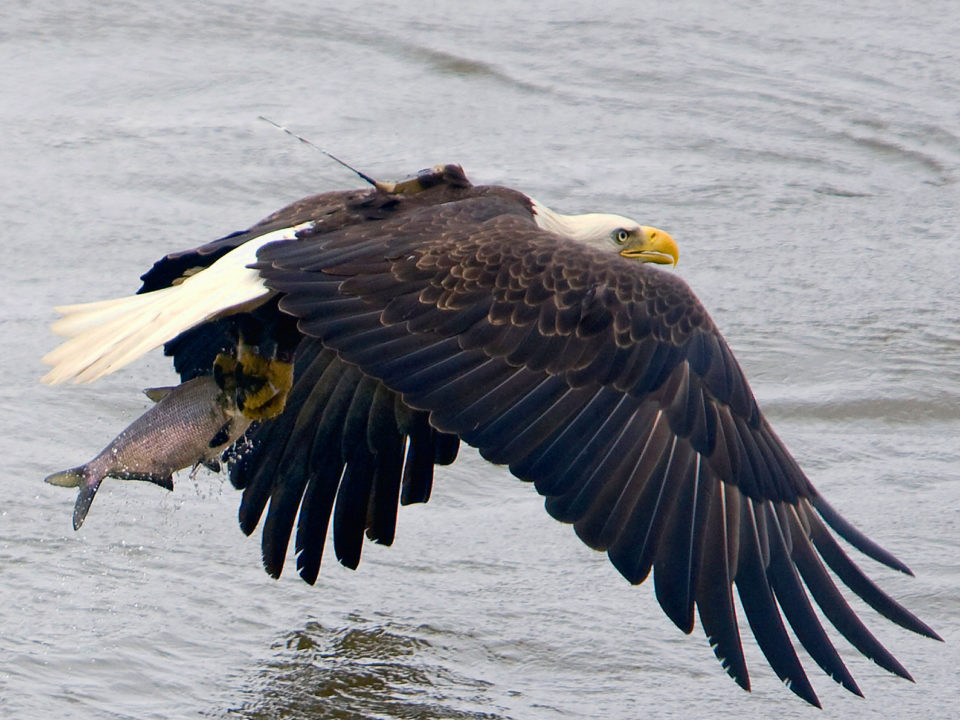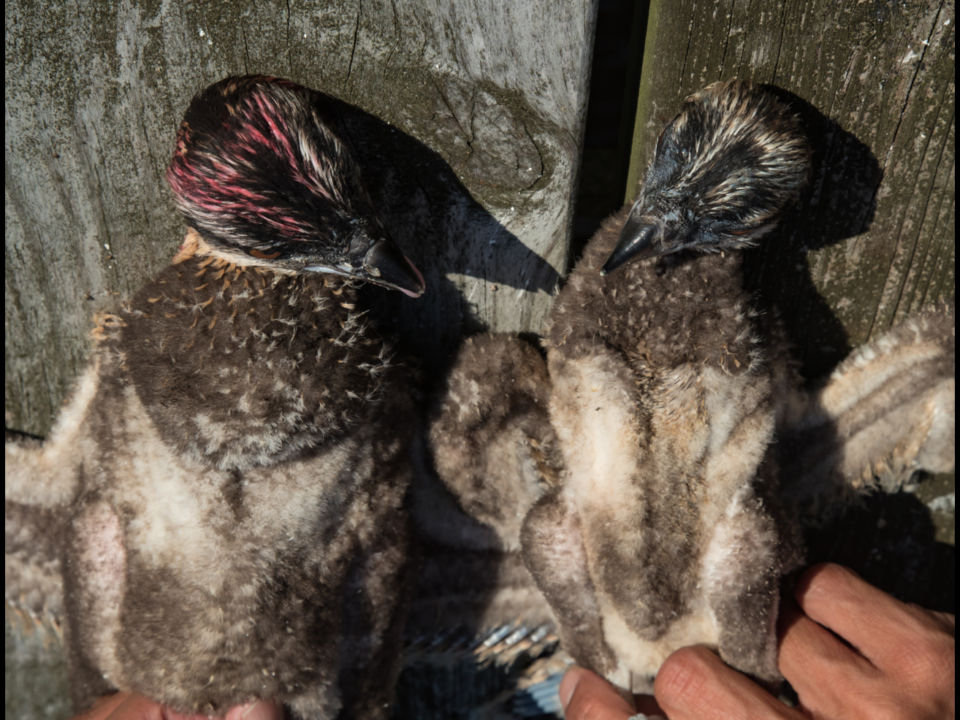OspreyWatch returns for its Fourth Year
Grace – Back to TRS Again March 22, 2015
March 23, 2015
Grace Returns to Albemarle Sound March 25, 2015
March 27, 2015The osprey are returning to the Northern Hemisphere this month and beginning to repair nests and reconnect with their mates. The Center for Conservation Biology’s OspreyWatch program is in its fourth year organizing citizen scientists to collect data and make observations about breeding osprey. In 2014, the project monitored 1,538 nests on three continents through the efforts of over 1,800 volunteers and researchers.
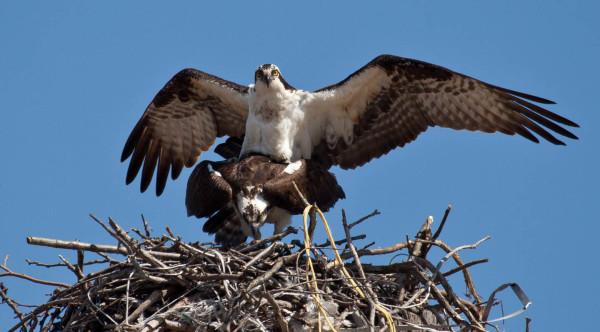
Adult osprey copulating on a nest in Virginia on March 22, 2015. Photo by Bryan Watts.
Volunteers collect data including the date when adults first arrive back at the nest (if the pair is part of the migratory population), the date that eggs are laid in the nest, the number of young seen, and the date the young successfully fledge. OspreyWatch volunteers also document the fate of nests that fail due to storm damage, nest predators (raccoons and owls), human caused nest destruction, or nest abandonment, which is important in helping researchers determine nest failure rates. Data collection on a large spatial scale enables osprey researchers to see broad trends in breeding chronology and breeding success.
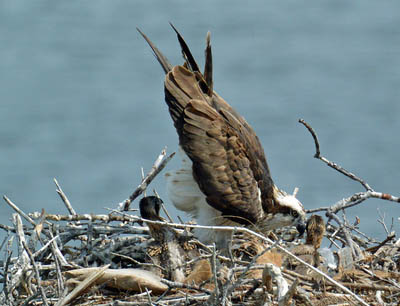
Adult osprey feeding two 2-week-old chicks on February 28, 2015, in Key Largo, Florida (Nest 5417, http://www.osprey-watch.org/nests/5417). Photo courtesy of Osprey-Watch.org.
OspreyWatch has helped facilitate data collection for researchers and citizen monitoring groups in Ontario, New Jersey, Florida, South Carolina, Massachusetts, Virginia, and California. The LowCountry Institute in coastal South Carolina joined OspreyWatch in 2013 and uses the website to coordinate 22 volunteers monitoring 420 nests (read their 5-yr study report). Contact program manager Libby Mojica at osprey@osprey-watch.org if your citizen science group would like to join as a monitoring group.
Interested in volunteering as an Osprey nest watcher? Register for an account on osprey-watch.org.
Written by Libby Mojica | ekmojica@wm.edu | (757) 221-2247
March 25, 2015
Related posts
A brood of osprey in Mobjack Bay showing a well-fed chick (left) and an emaciated chick (right). The chick on the right would die the following week due to starvation. Work in Mobjack Bay over a 40+ year period has shown that both reproductive rates and food delivery rates have declined dramatically. The decline in provisioning has led to an increase in brood reduction or chick loss due to starvation. Photo by Bryan Watts.

